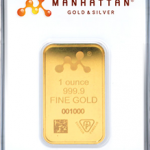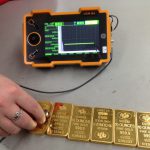 There are several ways to measure the precious metal content of items. In many cases, the assays that give the most accurate results also damage the item. For example, an X-RF machine requires a core sample to give accurate results for a gold bar. Likewise, fire assays are extremely accurate, but the item is melted down in the process.
There are several ways to measure the precious metal content of items. In many cases, the assays that give the most accurate results also damage the item. For example, an X-RF machine requires a core sample to give accurate results for a gold bar. Likewise, fire assays are extremely accurate, but the item is melted down in the process.
If the end goal is to sell the item based on the melt value of the precious metals it contains, then any damage caused by an assay is inconsequential. But what if you want to authenticate an item without causing any damage? There are assays for items like antiques, museum acquisitions, archeological finds, and other delicate items that must remain in pristine condition. In the next few blog posts, we’ll explain the testing parameters, equipment, methodology, and overall accuracy of non-destructive assays, such as:
Spectrophotometry
More often used to check consistency in manufacturing, spectrophotometry objectively measures colors with extreme accuracy. A spectrophotometer analyzes the light reflected by a sample to determine its spectral reflectance curve (SRC). Usually expressed as a three-digit number, the SRC is different for every shade of color. This makes spectrophotometry useful for checking the gold content of an item without causing damage.
A spectrophotometer is sensitive enough to tell the difference between plated or solid gold at all karat levels. The caveat is that they can only really show that the color of the object you are testing is consistent with the known value of an authentic piece. For example, let’s say you test a ring you know for a fact is 14k solid gold, and you get a SRC of 21.4. A different 14k ring may contain the same amount of gold, but mixed with different impurities. Because the different impurities change how the ring reflects light ever so slightly, it’s unlikely to get the exact same SRC score.
Continuing with the above example, all a spectrophotometer can tell you is whether the ring’s color falls within the acceptable range for 14k solid gold. It’s a useful test for confirming an item’s gold content, but doesn’t provide detailed information. In addition, the spectrophotometer only measures reflected light, so it can only test the outer surface of an item. In our next post, we’ll cover other assays that provide more thorough results.











